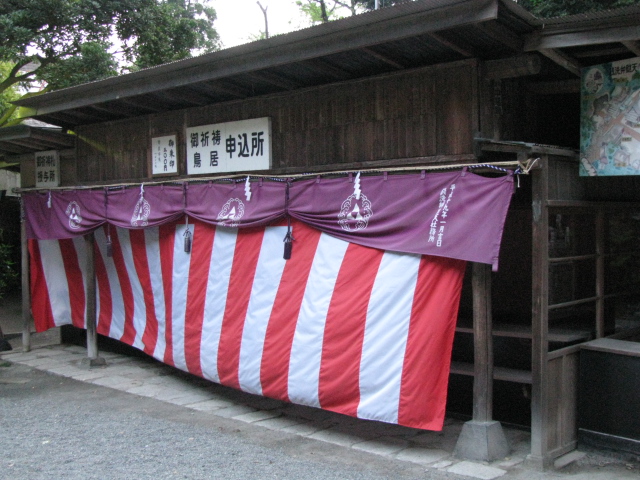DougNZ wrote:I would be interested in evidence to support you assertion; at what point in time, by whom and acting under what authority did a 'rule' become born stating that judo kohaku belts had red ends whilst karate had white ends?
You want evidence ? I assume you also want that for free ?
What does "kohaku" mean ? Doe it mean white and red ? No, it literally means "red and white", first red, then white. The colors are derived from the traditional opposition of red vs. white in the Genpei war (1180–1185), i.e. the respective colors of the Taira vs. the Minamoto clan. Hence competition of something between two teams is often referred to as 'kohaku', i.e. red vs. white. The same colors are found back on the kōhaku maku 紅白幕, the red and white Japanese festival curtains, which similarly start with red, then white, not white, than red, and they also end on red. See: http://en.wikipedia.org/wiki/K%C5%8Dhaku_maku
In other words, if used in stripes, 'kohaku' is understood to mean starting by red and ending on red. The same colors going back to the Taira and Minamoto later after the Genpei war also became the two colors for Japan's national flag.
By whom ad acting under what authority did such rule become that jûdô kohaku bels had red ends ? Um, by Kanô himself under the authority of shihan of Kôdôkan jûdô. At what point in time ? They were introduced in March of 1930 (some sources say March 1926). Evidence ? Kanô's own jûdô book (he only wrote one book on jûdô; I am not considering the booklet published by the Japanese Tourist Board a book), thus:
Kanō Jigorō: Jūdō kyōhon jōkan [A textbook of jūdō]. Tōkyō: Shushiki Kaisha; 1931, p. 7.
The idea originally was that people would wear these special belts all the time, but a modification was made after Kanô's death, and under Jirô Nangô in 1943. It was then made a rule that during ceremonial occasions 9th dan holders should wear red belts instead of black belts (after Kanô's death and the limitation to 10 dan ranks, red belts were changed to start from 9th instead of 10th dan). Initially Kanô had determined that kohaku belts would also include 9th dan.
You will not find depictions of red and white belts in jûdô from before that date. In Kanô's 1931 book you'll see them being worn by Kanda-sensei and Mifune-sensei. These are some of the oldest depictions of jûdô's kohaku belt.
There are older depictions of the kōhaku maku, and they started and ended on red. Here's an older depiction from 1920, but it does not allow to see it's begin and end:

This one allows you to see begin and end, which each time indeed properly is red, which is why the term is 'kohaku' and not 'haku-ko':

I am not 100% certain about the kujiramku, which are the black/white death screens. That term does not literally include the order of colors, and more over in English "black and white" is an expression(cfr. "black and white photography", "black and white movie") but not "white and black", so I am not 100% certain if variation there is allowed.
DougNZ wrote:Could it have been that a cheap belt manufacturer producing white-ended kohaku obi just happened to be located in Okinawa, the home of karate? I recently saw a cheap kohaku belt out of Australia that had one red and one white end. Is that for Australian masters of both judo and karate?

The belt maker in Okinawa does not exactly make "cheap belts". It was a Shureidô 守礼堂 belt. If one thinks about it, the confusion isn't really possible, because ... Shureidô does not even make jûdô equipment, only karate (and kobudô) equipment and is quite conservative. Thus logically the belt could not even be a jûdô belt. (I note though that these days they seem to have adopted their product line: the Japanese page only lists black belts and lower colored belts: http://www.shureido-karate.com/SHOP/370287/list.html, whereas the US website also includes a jûdô-style kohaku belt).
The case of karate is, however, far more complicated and I cannot satisfactorily answer your question with regard to that aspect. The reason is simply that karate is completely divided over numerous styles, with often Okinawan styles being distinguished from 'Japanese' karate styles, and Japanese styles also being different from each other. As far as I know the term "kohaku belt" is not typically used in karate by Japanese. Some styles maintain black belts all the way, some Okinawan styles incorporate one or two horizontal stripes for high ranks, and there are numerous varieties such as black-/white-paneled belts, and all kinds of other things. Some masters, such as Yamaguchi-sensei in Gôjû-ryû or Chitose-sensei wore red belts. Does the JKA even use colored belts at all for high dan ranks ? Dont think I ever saw Nakayama Masatoshi-sensei or Kanazawa Hirokazu-sensei in anything else but gi with a black belt. I don't know what Funakoshi himself wrote about belts and I would need to look it up, but I have no access to his major texts at this moment. Perhaps a karate scholar with immediate access to Funakoshi's original texts can address that part of your question more satisfactorily.










